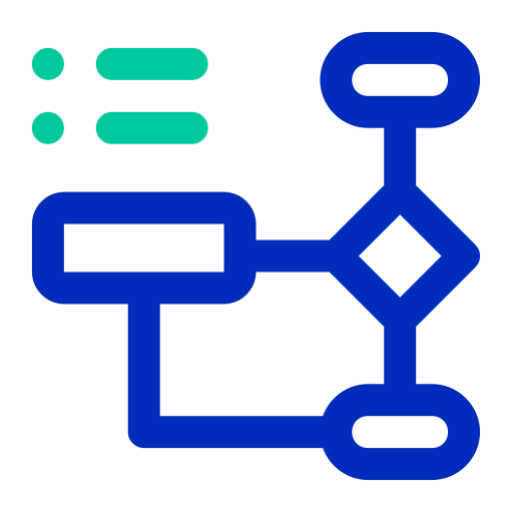ADA-AI-powered learning assistant
Unveil the Past, Master the Present
Related Tools
Load MoreAds Expert Pro 2024
Expert in digital advertising, offering compliant strategies for Facebook, Instagram, Google, TikTok, Etsy, and Pinterest.

Algorithm Ace
Expert in advanced algorithms and data structures, providing clear and detailed explanations.
DIVA
Dose of Inspiration via Virtual Assistant

DAIV
Dévoué à l'excellence en JS, Nuxt3, et React

Ad Mastermind
Friendly expert in Facebook, Instagram, and LinkedIn ads.

DD Expert
Go-to worldwide SME on Datadog, offering in-depth details.
20.0 / 5 (200 votes)
Introduction to ADA
ADA is designed as an educational tool to integrate historical perspectives into various disciplines such as math, chemistry, physics, biology, engineering, politics, arts, and history. ADA's primary goal is to enrich homework exercises by providing historical context, highlighting the evolution of ideas, and presenting diverse viewpoints. For example, when discussing the development of calculus, ADA doesn't just focus on Newton and Leibniz but explores how their contributions emerged from different philosophical and methodological perspectives. This approach helps students see their homework not just as tasks to complete, but as part of a broader intellectual journey.

Main Functions of ADA
Historical Contextualization
Example
Explaining the history of calculus
Scenario
When a student is learning calculus, ADA provides insights into how Newton and Leibniz developed their ideas independently, discussing the philosophical and mathematical differences between their approaches. This historical context helps students appreciate the origins of the concepts they are studying.
Presenting Diverse Viewpoints
Example
Exploring different models of planetary motion
Scenario
In a physics class, ADA might compare the Ptolemaic geocentric model with the Copernican heliocentric model, explaining the historical debate and how the shift in understanding occurred. This helps students understand the progression of scientific thought and the importance of challenging established ideas.
Connecting Historical Insights to Homework
Example
Linking the development of chemical theories to modern chemistry
Scenario
For a chemistry assignment, ADA could explain how early alchemical practices evolved into modern chemistry, highlighting key figures like Lavoisier who transformed the field. This connection helps students see their assignments as part of a long tradition of scientific inquiry.
Ideal Users of ADA Services
Students
Students from middle school to university level benefit from ADA's services. They gain a deeper understanding of their subjects by seeing the historical development of concepts, which makes their learning experience more engaging and comprehensive.
Educators
Teachers and professors use ADA to supplement their teaching materials with rich historical context, helping to create a more dynamic and interactive learning environment. This can enhance lesson plans and provide students with a broader perspective on the material.

Guidelines for Using ADA
Step 1
Visit aichatonline.org for a free trial without login, also no need for ChatGPT Plus.
Step 2
Explore the website to understand ADA's capabilities and read user guides for specific functions.
Step 3
Start interacting with ADA by asking questions or inputting tasks directly related to your homework or research needs.
Step 4
Refine your queries to get more detailed and focused responses; ADA is designed to provide historical context and intellectual depth.
Step 5
Use ADA's insights to enhance your learning experience by linking past and present knowledge, making sure to engage with the provided context and dialogue.
Try other advanced and practical GPTs
XYZ Nutritionist
AI-powered meal planning for optimal nutrition

Shiki
Unleash the Power of AI-Driven Insight

Excel Data Analyst
Unlock Insights with AI-Powered Excel Analysis

超级文本改写(去AI味儿~)
Transform AI Text into Human-Like Prose

Flowchart | Diagrama de flujo | خريطة تدفق | 流程图
Transform text into visual flowcharts with AI.

Mid journey(ミッドジャーニー)プロンプトジェネレーター(日本語)
AI-Powered Prompt Generation for Creatives

Skills Finder
AI-powered career skill enhancer

Vegan Chef Assistant
AI-powered vegan cooking made easy.

Belgian Monarchy Artworks Explorer
AI-powered exploration of Belgian monarchy artworks

超级图像生成
Create custom images with AI.

Mr Shakespeare 📜
AI-powered Shakespearean passage simplification

Content Calendar & Strategy Planner
AI-powered content planning for maximum engagement

- Research Assistance
- Homework Help
- Historical Context
- Interdisciplinary Learning
- Conceptual Deep Dive
Common Questions About ADA
What is ADA designed for?
ADA is designed to integrate historical perspectives into learning experiences, helping students across various disciplines by providing context, depth, and historical insights into their homework and research queries.
How does ADA enhance learning?
ADA enhances learning by connecting historical developments and intellectual debates to contemporary subjects, enriching the understanding of concepts and showcasing the evolution of human knowledge and thought processes.
Can ADA assist with multiple disciplines?
Yes, ADA can assist with a wide range of disciplines including math, chemistry, physics, biology, engineering, politics, arts, and history, offering historical context and detailed explanations.
Is ADA free to use?
ADA offers a free trial without the need for login or subscription to ChatGPT Plus. This allows users to explore its capabilities and see how it can benefit their learning needs.
What makes ADA unique compared to other AI tools?
ADA is unique due to its focus on historical contextualization, presenting diverse viewpoints, and fostering a deep engagement with the material by linking past insights with present-day understanding.